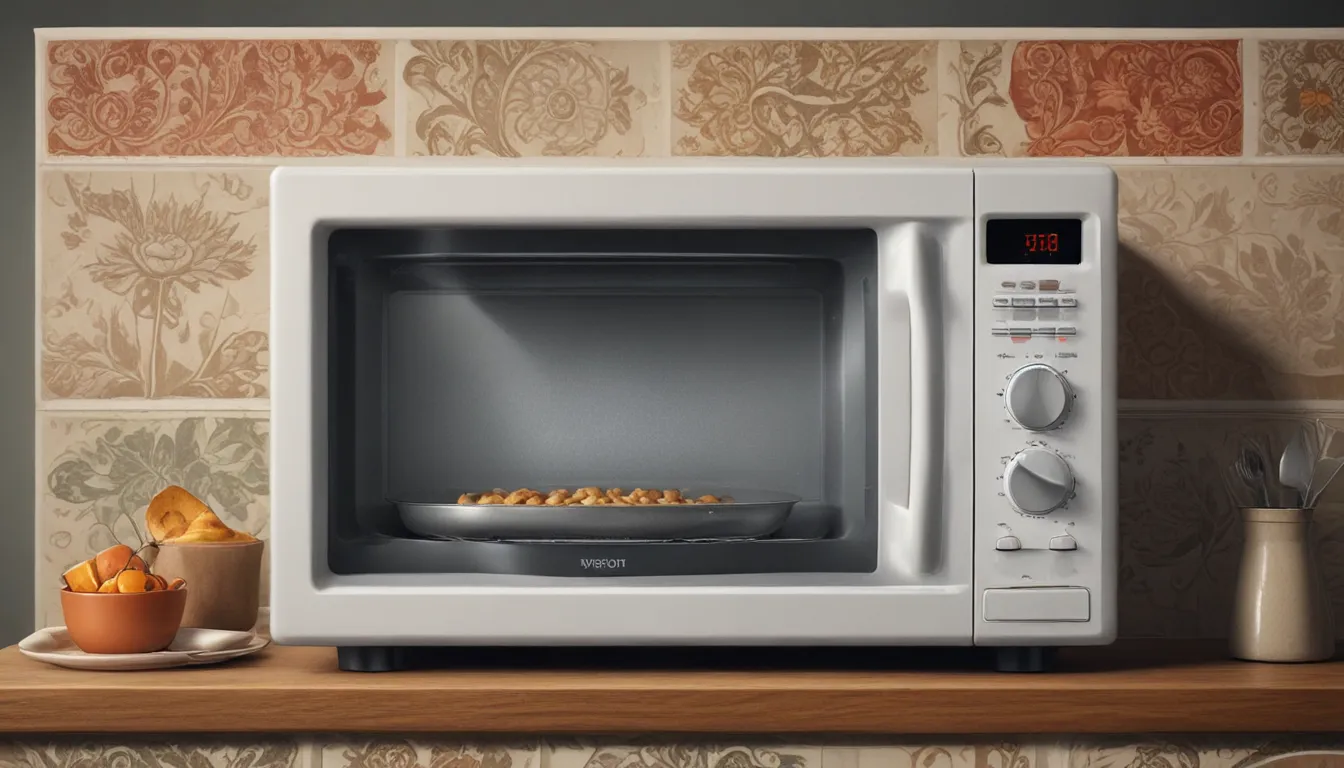A Note About Images: The images used in our articles are for illustration purposes only and may not exactly match the content. They are meant to engage readers, but the text should be relied upon for accurate information.
In today’s modern kitchens, microwaves have revolutionized the way we cook and reheat food. These convenient appliances have a rich history and interesting technology that goes beyond their everyday use. Whether you’re a foodie, a tech lover, or simply curious about household gadgets, the world of microwaves is full of intriguing facts waiting to be uncovered. Join us on a journey through 11 fascinating microwave facts that will leave you amazed by the ingenuity and versatility of these kitchen marvels.
The Accidental Invention of the Microwave Oven
Did you know that the microwave oven was invented by accident? Percy Spencer, an engineer at Raytheon, discovered the heating effect of microwaves while working on radar technology in 1945. One day, he noticed a melted candy bar in his pocket after standing in front of an active magnetron. This accidental discovery led to the development of the microwave oven, changing the way we cook forever.
How Microwaves Cook Food
Microwave ovens use radio waves to cook food quickly and efficiently. These waves penetrate food, causing water molecules to vibrate and generate heat. This rapid heating process makes microwave ovens a popular choice in kitchens around the world, as they can cook food in a fraction of the time compared to conventional ovens.
The Evolution of Microwave Technology
The first commercial microwave oven, the Radarange, weighed over 750 pounds and stood over 5 feet tall when it was introduced in 1947. Initially used in restaurants due to its size and cost, microwave ovens became more affordable and compact over time, eventually becoming a common household appliance by the 1970s.
Microwave Popcorn Innovation
The microwave popcorn bag, a staple snack for many, was invented in the 1940s by American engineer Percy Spencer. While the precursor to the bag was patented in 1945, it wasn’t until the late 1970s that microwave popcorn became a popular household convenience.
Energy-Efficient Cooking
Microwave ovens are known for their energy efficiency, using approximately 50% less energy compared to conventional ovens. This makes them an environmentally friendly cooking option, with shorter cooking times and reduced energy consumption contributing to their appeal in modern kitchens.
Sterilizing Kitchen Sponges in the Microwave
Studies have shown that microwaving a damp sponge for two minutes can effectively kill bacteria, including E. coli and Salmonella. This simple and quick method can help maintain kitchen hygiene and keep your sponges clean and safe to use.
Ensuring Even Heating
Due to the way microwaves penetrate food, heating can be uneven, leading to hot and cold spots. To ensure thorough cooking, it’s important to stir and rotate food during the microwaving process for consistent results.
Scientific Applications of Microwaves
In addition to culinary uses, microwave ovens are valuable tools in laboratories for various scientific experiments and processes. Their rapid heating capabilities make them ideal for scientific research and experimentation.
Creative Microwave Recipes
The speed and convenience of microwave ovens have inspired a plethora of creative recipes, from mug cakes to quick steamed vegetables. Their versatility in the kitchen has led to the development of innovative dishes that can be prepared in a matter of minutes.
Safety Features of Modern Microwaves
Modern microwave ovens are equipped with safety features such as automatic shut-off mechanisms and child lock functions to prevent accidents and ensure user protection. These features enhance the overall safety of microwave oven usage in households.
Microwave ovens have undoubtedly transformed the way we cook and eat, providing convenience, speed, and efficiency in the kitchen. Their impact on modern cooking culture is undeniable, with a fascinating history and versatile applications that have made them an indispensable kitchen companion.
Conclusion
In conclusion, microwaves have played a significant role in modern kitchens, offering convenience and efficiency in food preparation. Understanding the science behind microwaves, their impact on food, and safety considerations can help users make the most of this essential kitchen appliance. As we continue to explore and innovate in microwave technology, it’s clear that these devices will remain a staple in households worldwide for years to come.
FAQs
What safety precautions should I take when using a microwave?
When using a microwave, avoid putting metal objects or containers inside, as they can cause sparks and potential damage. Use microwave-safe containers and follow the manufacturer’s instructions for proper usage and maintenance.
Can microwaves affect the nutritional value of food?
Microwaves’ rapid and efficient heating helps preserve the nutritional content of food by minimizing cooking time. Avoid overcooking food in the microwave, as excessive heat exposure can lead to nutrient degradation. Using microwave-safe cookware and following recommended cooking times can help retain the nutritional value of food.
Explore more fascinating topics in food and nutrition by checking out our articles on lunch boxes for kids, the health benefits of bananas, and creative uses for baking soda in the kitchen. Each article offers valuable insights and practical tips to enhance your culinary experiences and knowledge.
Thank you for joining us on this journey through the fascinating world of microwave ovens. As we continue to learn and explore innovative cooking technologies, microwaves will undoubtedly remain a beloved and essential kitchen tool for years to come.






